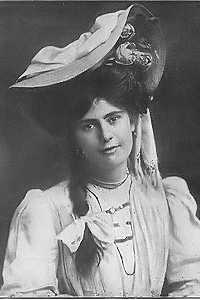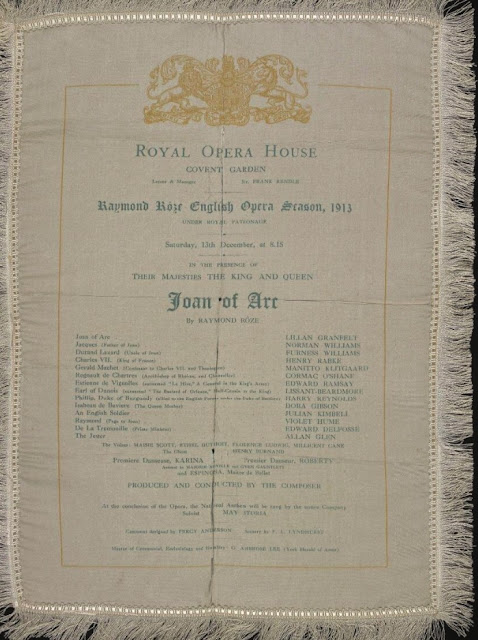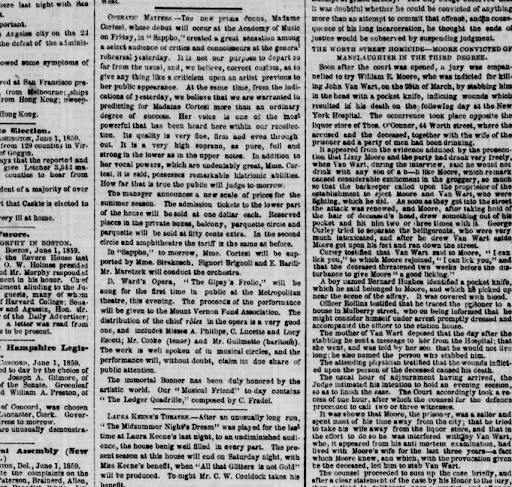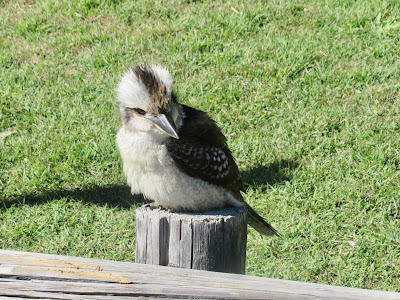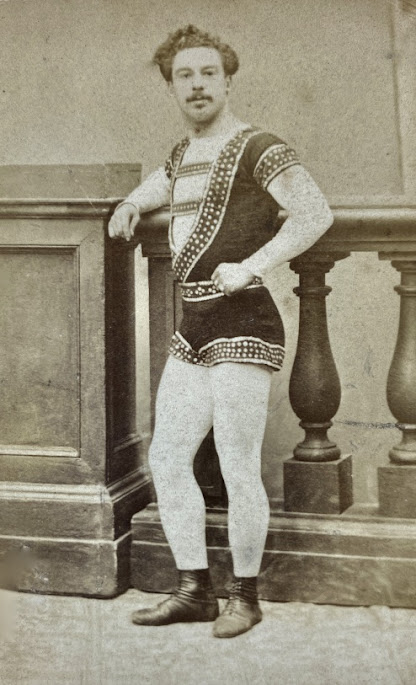I came to compiling this article via this gentleman ...
COMER, John (b Bath c1800; d Ilchester 17 March 1886)
When I, first, some years back, saw the reasonably-sized obituary for John Comer, ‘a very old member of the musical profession’, in the Era newspaper for 1886, I thought ‘who?’ Principal bass at Her Majesty’s Theatre under John Loder? Five years in Italy? ‘sang in all the principal cities (of Italy)’? Really? How had I missed him all these years? So, I went a-searching.
I didn’t find what I was supposed to find. I think some of it wasn’t there to find. But I found more than enough to decide me to include the Comer family among my collection of (slightly) Victorian Vocalists.
We seem to start with a clerical gentleman, by the name of Thomas Comer (b 1737; d 32 Milsom St, 17 December 1822). Mr or the Rev Comer’s early years are a bit mysterious to me -- there are a couple of TCs round in the Bath area in the 18th century, but apparently the Rev came originally from Hawkchurch in Dorset. It appears that those early years included, at least, one marriage and some children, among whom were apparently -- lots of 'apparently's around -- at least four daughters, and at least two sons. There was a Mary, born 13 April 1774 (or 1777, depending upon whom you believe), an Amelia born in 1789 (why the gap? have I skipped a generation?), there was a Thomas born in 19 December 1790 (ouch! also one baptised 15 October 1890, and what! one in 1769?), a Martha born about 1793, a Jane who taught dancing (‘pupil of Vestris’), and a John, who appears to have been the last child, born in Bath around 1800. How many wives (and, indeed, Thomases!) provided these offspring, I know not.
And where? One family historian insists that Mary was born in Ireland, another footnoter says she was the vicar’s second daughter (but when the above Martha, of Milsom Street, died, at Hotwells, aged 25, 2 August 1818, it was she who was reportedly the second daughter), a Bath book confirms that Thomas II was born at Bath, thus placing the family there in 1789, and there is general agreement that Mary learned singing from Rauzzini, who was based in Bath for some 40 years. Then, in the 1841 census, I find a 45 (recte: 52) year-old Amelia Comer (‘music teacher’, d Kensington Place, Bath 28 August 1844) living at 4 Kensington Place, Walcot, and saying she was born there … I see a Martha Comer, by Thomas ex Jane, christened at Walcot in 1775 … well, I don’t know exactly when the (yep!) apparently Reverend Comer came to Walcot, and took up his post as clerk and sexton of the Kensington Place Chapel (I see him there, still, in 1819), but it looks as if he’d been there some time, breeding, latterly with the assistance of a wife named Martha née Rivers, at the usual Clerical rate. Oh dear, I think I had better have another sort of this lot! Too many Toms.
Anyway, I don’t actually spot any of them in musical action until 10 November 1797, when a Miss Comer (it's Mary of 1774) turns up on the bill at the Bath concerts with Miss Poole, Mme Mara, Nield, Florio et al. She became a regular at these concerts, and I spot her also singing at the Three Choirs Festival, at Gloucester, sharing the soprano music with Madame Mara. Shortly afterwards (Cheltenham 19 September 1799), she 'of the Bath Theatre' married the 'celebrated' flautist Andrew Ashe (d Ely Place, Dublin April 1838) and went on, as Mrs Ashe, to make herself a very fine career as a vocalist, in, particularly, the fashionable local Gloucestershire and Somerset concerts, of which Rauzzini, initially, and Ashe, latterly, were for many years the director.

I see her taking a Benefit (21 March 1800) at the Bath New Assembly Rooms. In 1801 (25 March) she sang at the Haymarket oratorios in Rauzzini’s Requiem, in 1804 and 1805 and following years she appeared in Corri’s concerts in Edinburgh ('Sweet Bird', 'Sweet Echo', 'I Know that my Redeemer', 'O Lord Have Mercy'), and at London’s King’s Theatre alongside Mrs Mountain, and in 1805 she featured in the Covent Garden oratorios (The Messiah, The Creation, Acis and Galatea). She returned to London in 1806 for the Vocal Concerts at the Hanover Square Rooms, in 1807 to the Choral Fund and the Antient Concert, as well as singing at Warwick House, on the occasion of the 11-year-old Princess of Wales’s birthday, and at a variety of other private and fashionable functions. In 1808 she appeared at the Argyle Street Institution, singing in the concerts, and making her acting debut in the burletta Gli Strioni (22 June) with Lanza.
In 1805ssq we have Mrs Ashe and Miss Comer both appearting at Mr Comer's Benefit in Bath. 'Miss' can be seen in concert till 1812.
In 1810, Mary Ashe sang alongside Catalani in the Salisbury Festival, at the Oxford Installation, and, when The Cabinet was played at the Haymarket for Braham’s Benefit, the two Ashes appeared with him. Thoroughly established, now, as one of Britain’s finest sopranos she continued on, through a mass of pregnancies and children, singing now in Bath, now in London, at Drury Lane, the Philharmonic Society, at Hanover Square Rooms, at the most fashionable of parties, and before Royalty on such occasions as the Queen’s Birthday, and at the Argyll Rooms for her own Benefit, and she still voyaged to Scotland for Corri’s concerts.
In 1819 the Ashes appeared, with two of their daughters (piano and harp), before the Price Regent at ‘the Persian Ambassador’s Concert’, and Mary Gertrude and Honoria Maria Ashe became a part of the family act as known, appearing with their parents in aristocratic drawing rooms, at the Argyll Rooms (1814), on the stage of Drury Lane, and in many a concert in between. At the same time, Mary established Mrs Ashe’s Musical Academy at 35 Belvedere, Bath, where pupils were given an hour at a time: half tutored in singing by Mary, and the other half either in harp or piano by the daughters. 8 guineas for three months, two lessons a week.
Ashe died in 1838, and Mrs Ashe in 1843. Mary Gertrude Honoria married (1822) Edward Carlton Cumberbatch, the ‘black sheep’ son of a wealthy Barbadoes family, and died in 1847, Honoria Maria Olympia married a Captain Frederick Webber Smith and seems to have survived till 1888. The rest of the family – ‘nine or ten’ of them, so their father related – are a little off my patch. So, we leave Mary Ashe, and get back to the Comers.


Father Thomas also appears round this time, and it is evident that as well as being a fertile cleric, he was also a musical cleric. I see him, in the early 1800s, promoting concerts of sacred music at his Chapel in Walcot, with Mrs Ashe prominently featured, and in 1808 (10 November) his concert bill 'before the Duke of Gloucester' includes Mrs Ashe, Miss [Amelia?] Comer and Miss M[artha] Comer, all singing, and Mr T[homas] Comer junior playing the violin. In 1810, an article about the generosity of Catalani, mentions that she sang for the ‘very aged’ Mr Comer, round about that time, and though, after 1811, Thomas junior ceases to be ‘junior’, father lived till 1822.
But Thomas junior continues. When Ashe puts on a Christmas Messiah with Catalani top-billed, Mr Comer is among the soloists. It has to be Thomas, because father is too old and John is too young. He appears regularly as a soloist in local concerts over the next half-dozen years, often featuring as a violinist as well. ‘Miss Comer’ seems to vanish after 1812, but Mr sings in the Cornwall Music Festival, The Messiah and The Mount of Olives at Bath, in many a concert given by Ashe, visits Margate and then stops. He stops, simply, because he has gone to the join the company at the Theatre Royal, Covent Garden.

For the next decade, Thomas, ‘the bass singer’, played bit parts on the stage at Covent Garden and Drury Lane, as well as at Birmingham, Worthing et al in between seasons. Amongst the many roles he took were Dirk Hatterick in Guy Mannering, Ruthven in The Warlock of the Glen, Lopez in The Libertine, McStuart then Dougal in Rob Roy, Pan in Midas, Glumdalca in Tom Thumb, Smart in The Rendezvous, Guido in The Vespers of Palermo,The Sentinel in Pizzaro, Lodovico and later Cassio in Othello, Corporal Standfast in The Battle of Waterloo, Sebastian in what passed for The Marriage of Figaro, Oliver in As You Like It, Rodolph in William Tell, Jocoso in Clari, Conrad in Much Ado About Nothing, Montolio in Faustus, Mesrour in Aladdin, Jorum in The Sleepwalker, Guildenstern in Hamlet, Omar in Bishop’s The Fall of Algiers… as well as playing in pantomime, singing between the pieces, and playing violin when required. And then, in 1827, that stops too.


Why? Because Thomas lit out for America. He headed for Boston, where he worked again as an actor, a singer and as a musician – I spot him conducting the Boston Musical Union and The Handel and Haydn Society in the 1830s, he conducted the Woods and Brough, the Seguins, and Mrs Austin, in opera, and took the baton at the Boston Museum in the 1840s, supplying the house with various ‘composed and arranged by’ scores, as required, at the Boston Theater at its opening in 1854, and Howard Athenaeum as late as 1857; I see him playing Dandini in Cinderella and singing ‘Now Heaven in fullest glory shone’ in the oratorios of 1838; he composed choral music, founded the Musical Fund Society in 1847 – and many a tale of ‘Honest Tom Comer’ is included in Clapp’s A Record of the Boston Stage.
He can be seen in the 1860 census, living in a residential hotel, ‘musician’, aged 69. He died in Boston on 27 July 1862.
But just as Thomas quits England, a new Comer surfaces in Bath. Mr J Comer. At last, here is ‘little’ John. By 1827, obviously, something like 27 years old. For I assume all the ‘Mr Comer’s before that are Thomas. And where do I first see John? Why, in a concert in Bristol (29 November 1827) where the bill includes Pasta, Miss Forde, Brambilla, Curioni …
That obituary piece (which looks queerer, every step one takes into Comer-land) says he’d been singing in concert in Bath since 1821. Well it’s possible, maybe even likely, but if it were so it has been privately and away from the press. And even now, I don’t see a lot of him.
Following the queer obit’s say-so, he now went, in 1830, to Italy for five years. Well, if he went for five years it wasn’t in 1830. Because one thing I have exhumed is an advertisement for a Bath concert given by Henry Field in 1833 (18 April) which is his ‘first appearance since his return from Italy’. So, I’ve searched in sunny Italy. And guess what!? I’ve found him!
Teatro Privato Loup Bologna dateline 15 May 1829: ‘Il signor [Giovanni] Comer di Scuola Inglese, che disimpegna la parte Assur e dotato di una bella voce di basso. Nulla veramente lascia a desiderare nella essecuzione di tutti I suoi pezzi …’ A rave review. But what is this production? Ah .. ‘a company of young amateurs…’. Tebaldo in Vaccai's La Guilietta e Romeo with the sisters Ghedini at Macerata. But it gets a little better. Teatro di Fuligno 30 January 1830. La Donna del lago. ‘Il signor Comer con le sue corde profonde ed intonate ha guistamente meritato reiterati applausi’ as … well, it must be Duglas! Then bass at the San Luca, Venice. Eduardo e Cristina 'omogeneo voce e precisione di canto', Elisa e Claudio 'riusci con plaudo'. At Ravenna he is Elmiro in Otello 'bella voce di basso' ..., at Fermo in Il Pirata ..
I suppose he did more yet in his three active years in Italy, but this is all I have found. The obit says he got a Doctorate of Music from the Musical Academy of Bologna. So, maybe he did.
Back in England, in 1833, and … ‘he was the principal bass singer in Italian opera at Her Majesty’s Theatre, then under the management of Mr John Loder’. Well, that escapes me completely. I don’t know if and when Loder ran London’s Italian opera, and since Comer called himself by his own name in Italy, I presume he would have in England, too. And I see him not.
I do see him in an 1835 concert party, with Misses Forde and Turpin, Edward Loder and Millar, and singing in the Loders’ Bath subscription concerts. Had he been a primo basso at the Italian opera, I am sure it would have said so on the bills!
Anyway, he moved to Bridgwater, took up the superintendance of the local society for vocal and instrumental music, and continued to sing, through the early 1840s, in Bath and in Taunton, where he took part in the 1845 Festival, with the Williams sisters, Maria Hawes and Hobbs, and to where he later removed, taking over the running of the Taunton Madrigal society and teaching at the Independent College into the 1880s.
John married at some stage and had a daughter named Eliza Jane, ‘professor of music’. I guess she is the Eliza Jane born 1829, of John Comer and Eliza[beth] née Pain (m 23 May 1824). Mrs Comer must have died, because, by the 1841 census, at King's Square, Bridgwater, he has a Bristol-born wife named Jane, and the next year a son, George. A local Taunton obituary identifies John’s wife as one Jane Wingrove (b 1796) 'a relation of the lady of that name well-known in all musical circles in this town'. The John who married Miss Wingrove did so in 1832, when our John was said to be in Bologna. Obviously he wasn't! But ...
Jane is a ‘teacher of dancing’. This is awkward, because John also has a maiden sister named Jane (d 49 New King Street, Bath, 15 June 1889), who is also a ‘teacher of dancing’ ('Miss Comer's Dancing Academy 32 Milsom St' in 1816) and who, at her death, named niece Eliza Jane (now Mrs Charles Bluett) as her executor. Anyway, Jane, the ‘second wife’ seems to have died in 1876 (9 June) at the age of 77. Apparently, she taught dancing into her seventies. John remained active into his eighties.
John and Jane were, as said, the parents of George Comer, and George carried on the theatrical side of the family. He started in the business as an actor – I see him in 1875 with Eliot Galer at Leicester doing ‘walking gents and juveniles’, then at Cambridge, and touring for over two years with Craven Robertson’s Caste company – before switching to writing. He appeared to specialise in the most melodramatic of melodramas – beginning with Drifting, Woman’s Rights, Honours Even, Les Voyageurs Comiques, Morality, and achieving some success with Hard Lines (14 April 1883) at the Queen’s, Manchester, The Main Hope, and several pieces (Till Death do us part, Dead Beat) for Conquest at the Surrey Theatre. Pieces such as The Right Man, Darkest London, Homeless, The Red Barn (which made it to Broadway), flooded provincial and colonial stages for some years, and George was still writing into the twentieth century.
There would be no next generation from George, who lived and died a bachelor. Eliza Jane Bluett, after her wine-merchant husband’s death (14 October 1888), worked as a ‘professor of singing’. She died in Paris, 19 January 1908.
So that is the tale, or what part of it I have been able to exhume, of the Comers of Walcot, a large percentage of whom took part in the musical and theatrical world of the nineteenth century. Whether anyone really sang in the Italian opera or not.
Footnote: John Loder was first violin at the Lyceum, then a second violin at the Italian opera. He was concertmaster in various orchestras thereafter. But the report saying Comer sang 'under' him at Her Majesty's came, of course, from a Bath newspaper. Hometown boys need a little hupppppp!.
Which Miss Comer is advertising 'organist, piano-forte, harp and singing lessons' from 32 Milsom in the 1830 Bath 'book of useful information'? Amelia, I guess? Oh, the Loders were at no 46. Propinquity :-) And Mrs Comer died 'at an advanced age' at the same address in January 1823 ... and another, aged 71, June 2 1836 at Hillsbridge Parade ...




